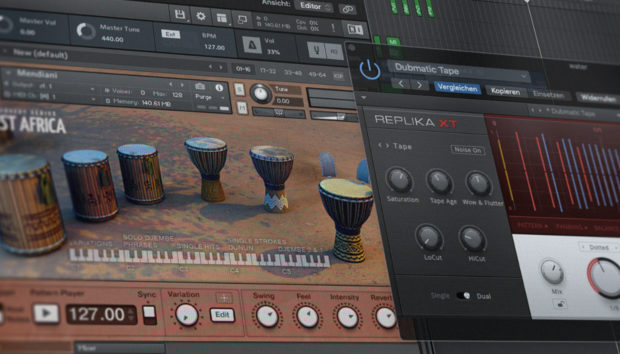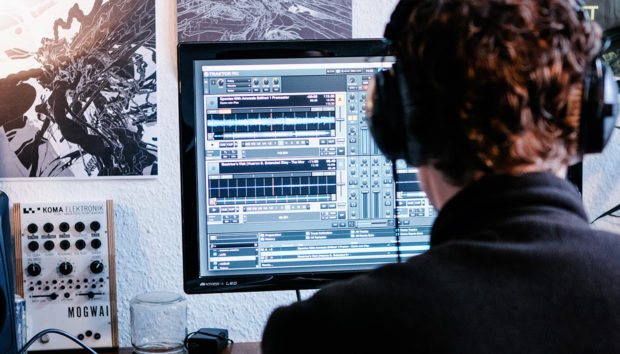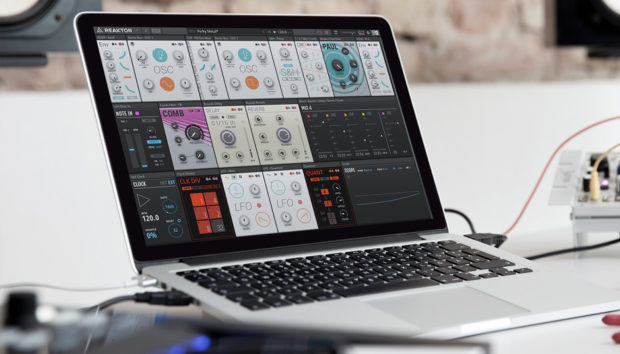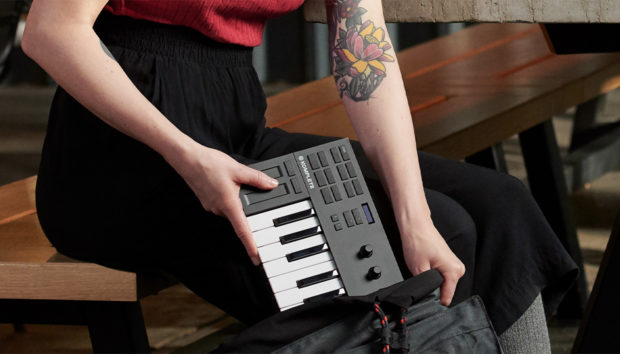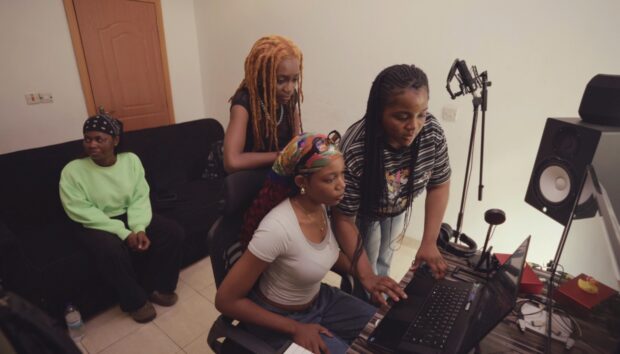FM8 isn’t the first thing most producers reach for when they need percussion. For Ainonow, that’s exactly the point.
His latest double-sided release on Onset Audio shows how deep this approach runs. One track hits like broken machinery – tight, heavy, and distorted. The other floats in its own space with hypnotic drums and ghosted rhythmic textures. Both rely on experimental sound design shaped around FM synthesis – more specifically, around building drums and transient-rich layers inside FM8.
In this interview, Ainonow breaks down how he uses FM8 to design percussive elements from scratch, control harshness without losing aggression, and organize his sessions for flexibility during songwriting. For producers who’ve only used FM8 for glassy leads or metallic pads, this is a reminder that sometimes the most overlooked tools open up the most creative paths.
Jump to these sections:
- Going beyond the glassy lead
- Building percussion from scratch
- How Ainonow tames FM8’s harshness
- Live synths vs. samples
- Creative effects chains
- Shifting your FM8 mindset
Stick around for smart routing, patching ideas, and why FM8 still holds up when you stop using it the way everyone else does.
Plus, get free FM8 patches made by Ainonow to get the most out of your projects with this synth.
Most people treat FM8 like a glassy lead machine – what made you start using it for percussion and noise instead?
Honestly just experimentation and a desire to try to use things in ways they aren’t typically used. I start everyday in the studio and for the first hour I commit myself to doing a session where I completely ignore any thoughts of trying to come up with a finished product and just experiment with ideas I have had or that I am curious about and want to explore. Whether it is good or bad it doesn’t matter.
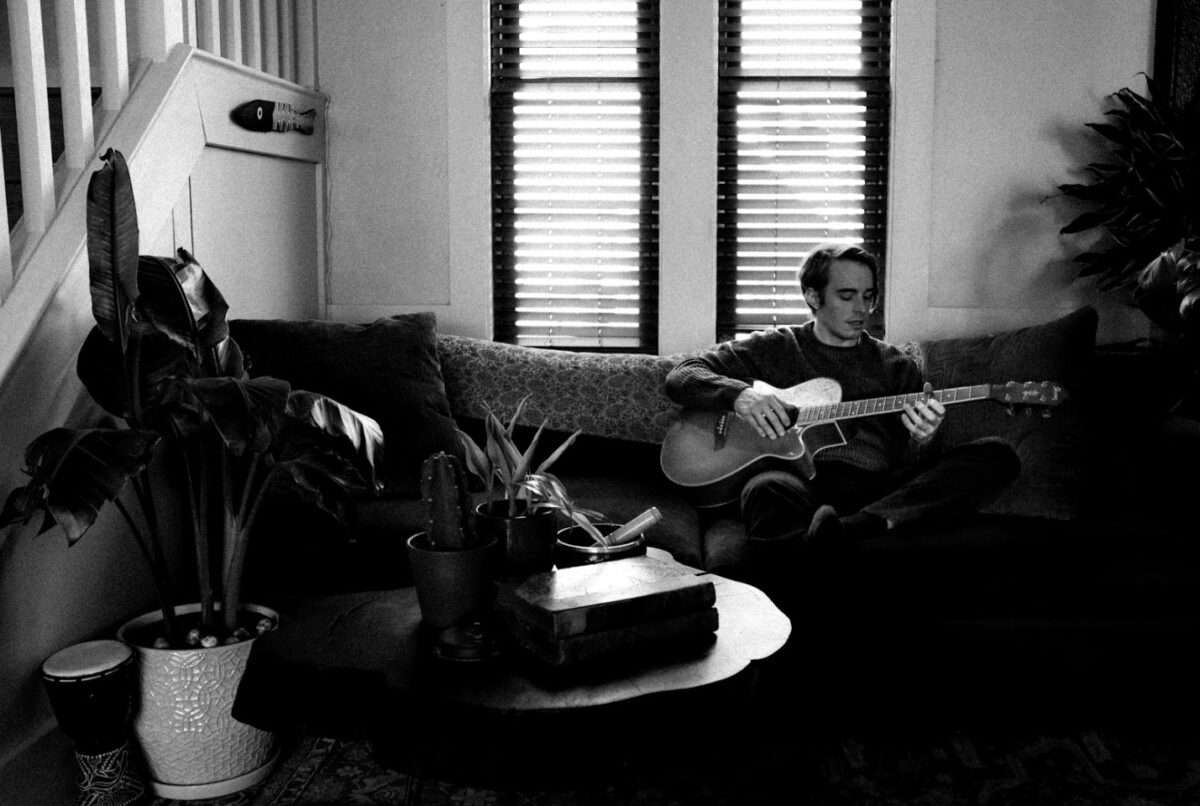
Once the hour is up I then analyze what I’ve made and ask myself 3 questions:
- Do I like this?
- Did I learn something?
- Was this fun for me?
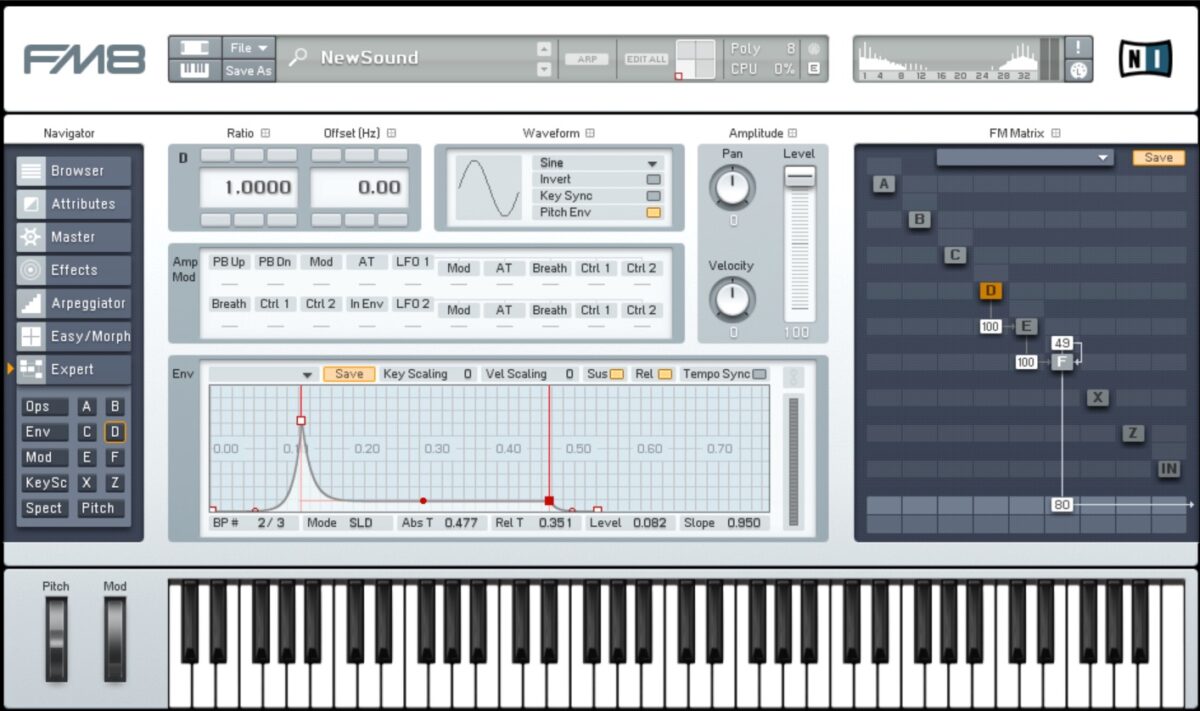
If it’s good I’ll usually use it in something later, stem it out, or save it as a preset, rack, or whatever it was that I was working on. And if it was bad then no big deal it’s trashed, but hopefully I learned something or at the very least I had fun doing it. It was during one of these sessions that I started using this approach to sound design.
Pro tip from Ainonow: In order to have finer control on the intensity of the frequency modulation from a modulator on other operators don’t primarily rely on the modulator’s amplitude level to dial it in. Instead, set the amplitude level to 100 and draw a very small envelope for the modulator operator to start with and then adjust from there. You can then reduce the amplitude level if further wrangling is needed.
When you’re designing percussion in FM8, are you usually building from scratch or starting with something like a bell or mallet preset?
With FM8 I’m always building from scratch. There are definitely some great presets in FM8 but using those as a starting point is exactly how you wind up coming to the same results as everyone else and using it in the same way as it’s always used. I think to come up with something truly unique and interesting you need to stretch yourself and dial in a sound that feels worth exploring.
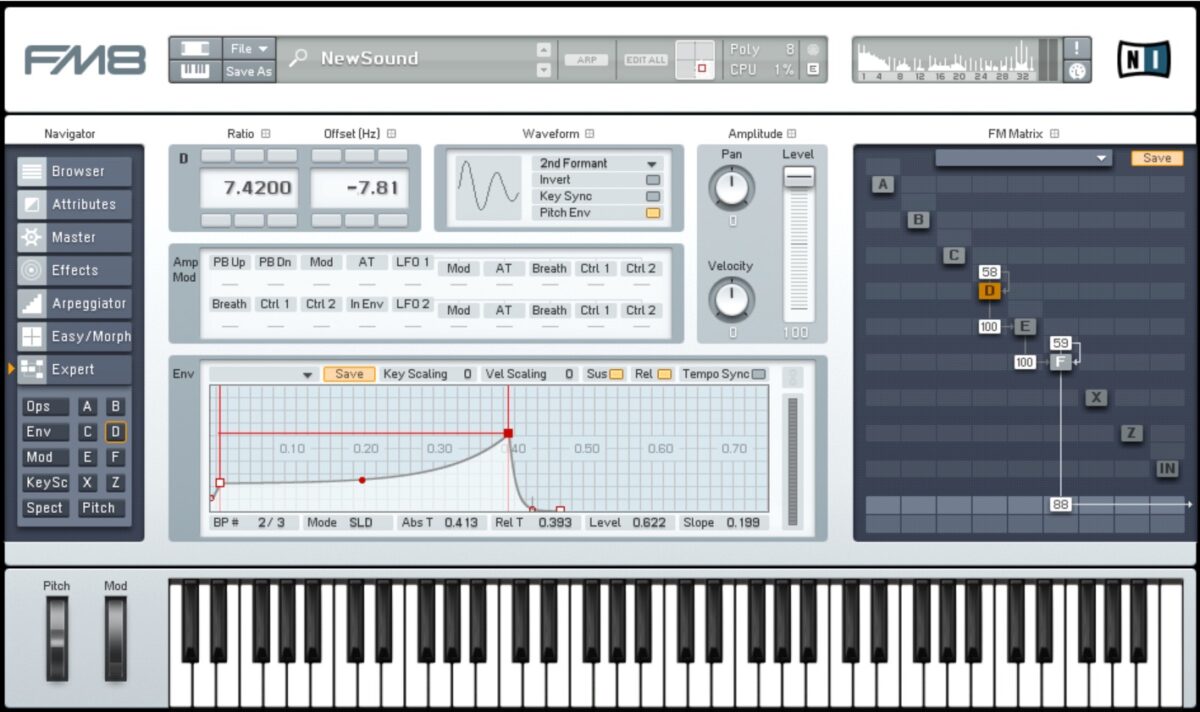
I can see how opening up a bell or mallet preset could be a good starting point, at least from the perspective of understanding how to design good transients. But trying to start there and then reverse engineering it to making drum sounds I would find a bit tedious I think. I prefer to just know how the synth works and make intentional choices that lead me to the sounds I want to be making. It’s not really fun fumbling in the dark in reverse.
Pro tip from Ainonow: When you create a sound you like but it’s not quite fully dialed in, use the Morph box to create multiple versions of the sound by adjusting the desired parameters and basically act as save points in your patch tweaking. This is also a really handy tool when you create a sound and want to have different variations of the sound appear throughout your track, it is a very underrated feature in FM8.
How do you control the harshness of FM8 when you’re dialing in sharp or noisy transients?
The most important things within FM8 to control this are really dialing in the connections you make between all the operators and playing with the ratio and offset parameters of each operator. Beyond those parameters it’s really important to set the operator envelopes to be extremely subtle, particularly on the modulator operators affecting the carrier.

I’ve found this is the best way to really wrangle in the crazy distortion and feedback you tend to get in FM8 when doing a lot of frequency modulation.
Outside of that I really like to use the Spiff and Soothe plugins as part of my effects chain when using FM8. These can really help you control the transients and resonances that can be tough to tame when using FM synthesis.
Beyond those soft clippers used very gingerly are your best friend for last pass transient management.
I typically avoid using compressors because once you start messing with the time domain it can potentially lead to phase issues and result in losing some of the punch from the transient and also thin-sounding low end.
Pro tip from Ainonow: As a general rule of thumb, if you want to get more complex sounds in FM8, rather than feeding multiple modulators into a single carrier it’s much more effective to have the modulator operators serially feed into each successive modulator.
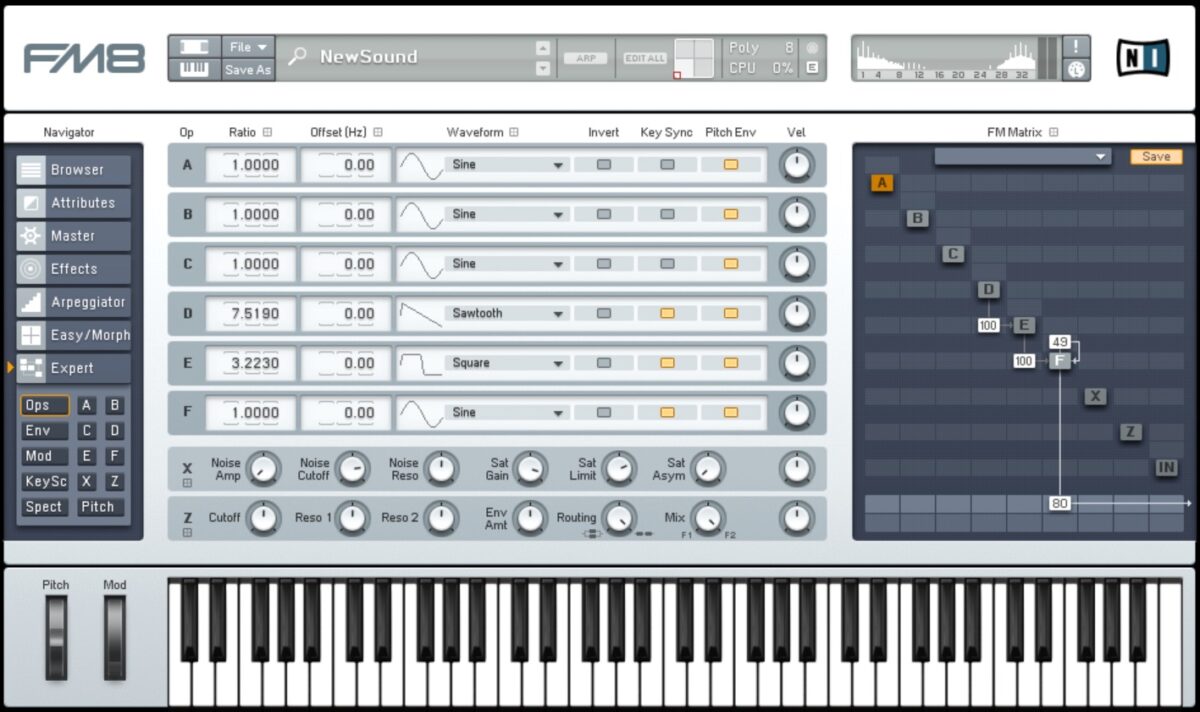
Do you build drum racks or sampler instruments out of FM8 bounces, or keep the synth live through to the final mix?
I never build drum racks because with drums I always work in audio.
I like to see visually exactly what is happening in terms of the transients and tails of my drum hits so that everything is extremely tight and I can suss out any issues in the mix much quicker.
So when I synthesize drum sounds it is always a separate session from when I’m songwriting and I just save everything I do as samples. If I want to change the timbre of a drum hit while songwriting I typically just layer multiple samples to get the specific sound I want and EQ each layer as needed.
Occasionally I will do resampling when using FM8 for creating leads and mid basses but typically I prefer to keep a majority of my synth sounds live until I get to the final mixdown stage, where I will often bounce everything to audio.
The reason for this is that I like to keep everything open and available to tweak for these types of sounds until I feel the song is truly done – because I often like to evolve leads and mid bass sounds as professional tools in the song or often will need to make adjustments to sounds that no longer fit when I take the song in a different direction.
But once I feel the song is finished, I like to bounce everything to audio so that I stop making minor changes and just focus purely on the mixdown process.
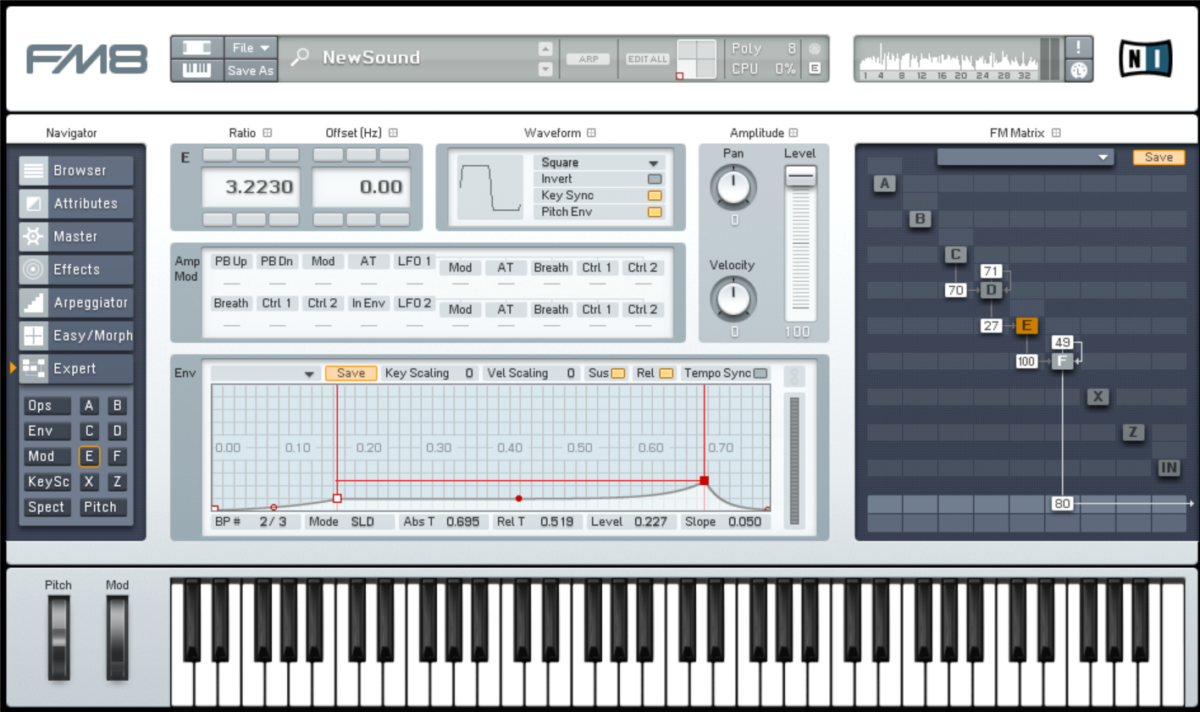
Pro tip from Ainonow: When making drums and percussion sounds in FM8 be sure to activate Key Sync on all your operators you’re using in the sound design process so that you get nice consistent hits.
Do you ever run FM8 through effects chains – distortion, reverb, bitcrushers – to create more aggressive percussion?
All the time. When I’m doing my sound design sessions there are no right or wrong answers. I just create without limitation. As I mentioned before, I like to keep my sound design sessions and writing sessions separate.
This helps me to stay more focused on the big picture when I’m songwriting and not fall down rabbit holes where I lose sight of what the song is really about.
I should say though I don’t typically use reverb on my drums when designing the sounds because I want dry, tight drums so that the mix process is a bit more straightforward. Since I primarily make DnB, the songs are so rhythmically dense adding lots of long tails can be really problematic.
I only apply reverb to my drums as the very last step in my mixdown process to breathe a little life into them and give a cohesive sense of space to the entire percussion section and when I do it’s an extremely light touch of reverb using multiple sends.
Pro tip from Ainonow: Keep your carrier operator ratios set to standard octave values so that FM8 remains sounding in tune but experiment a lot with the modulator operator ratio and offset values as this is one of the most powerful features of FM8 for creating truly unique sounds.
For someone who only uses FM8 for leads or pads, what’s one patching mindset shift you’d recommend to start using it percussively?
Honestly, the mindset shift is pretty simple at heart.
Realize that the only limitation is your own creativity. Certain instruments and interfaces will have their strengths and suggest specific ways to use them, but true creativity is finding unique and interesting ways of using a certain piece of gear or software beyond what is suggested by it at the surface level.
For those wondering how to get to this place of creativity, the best thing you can do is practice with that synth or gear. You can and should read the manual, dissect presets, and watch tutorial videos, but this all leads you to think about the synth in a biased way. To really know a synth, any synth, you need to spend time with it and paying attention to how adjusting certain parameters affects the sound that is being output.
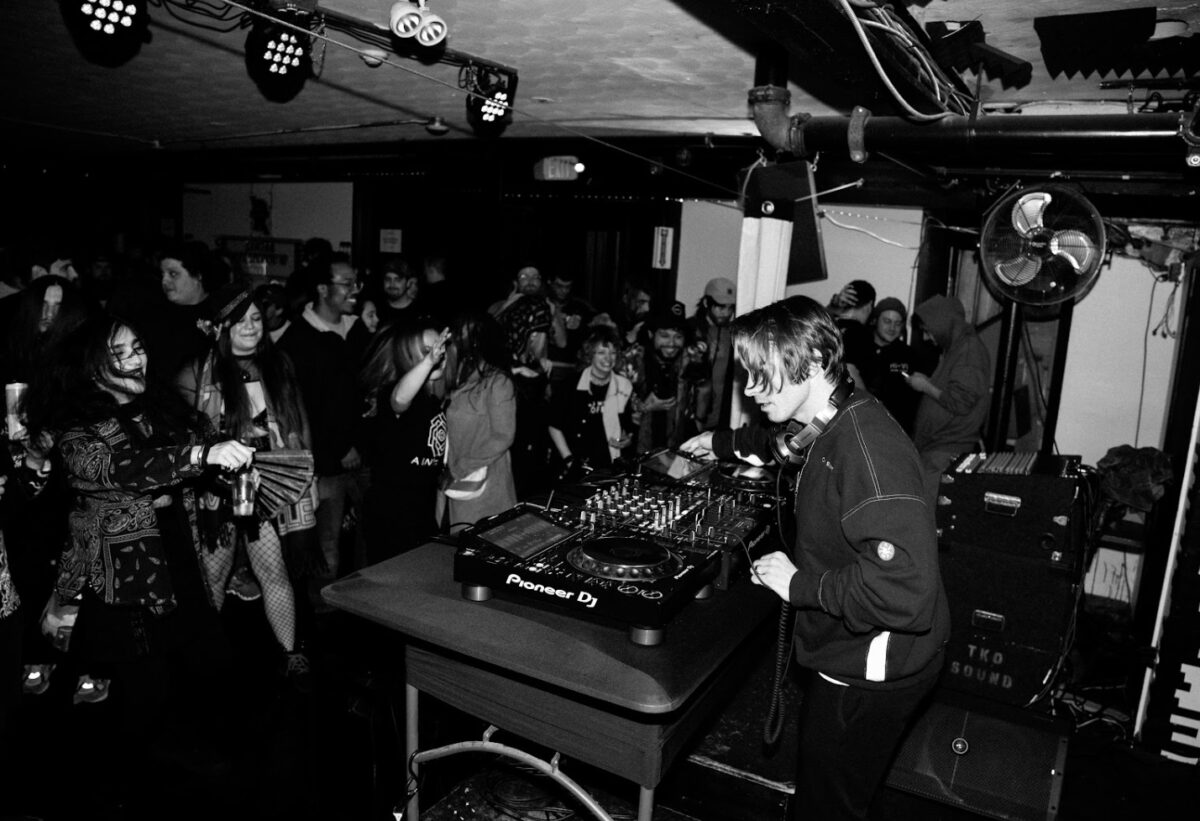
Practice making lots of sounds and give yourself creative challenges to make specific sounds. Once you start to do this for long enough you will begin to create interesting stuff that is unique to you and that you truly love.
Wrapping it all up
Huge thanks to Ainonow for breaking down a side of FM8 most producers don’t think to touch. The way he uses it to design percussion and noise layers shows how far you can push a synth once you stop chasing conventional sounds and start focusing on control, movement, and intention.
You can hear that precision all over “Break It” and “Lilt.” The drums feel sharp but measured. The transients hit without overwhelming the mix. And the textures not only fill space but also develop, shift, and guide the energy. It’s the result of a workflow that separates sound design from songwriting, keeps ideas modular, and treats FM8 like a blank canvas instead of a preset browser.
For anyone stuck in the usual synth habits, this is a reminder: the best sounds usually come from misusing your tools on purpose – and knowing exactly what you’re listening for when you do.
